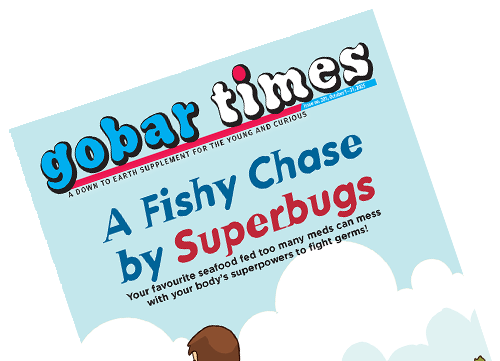
Bees are indispensable pollinators and exist in all types of climate—from forests in Europe, deserts in Africa to the Arctic Circle. But what would happen if all of them just disappeared one day? Here's a look. ******************************************* What if one day you step into your house and find there is no food. The refrigerator is empty and you switch on the television to know more. A news channel tells you that there is a food crisis and the reason for this is that there are no bees left in the world...

Carrying water by trains could be an emergency measure. Chennai has a strong tradition of water harvesting. But the problem is that most of these structures are either defunct or poorly maintained. Chennai which had 19 major lakes covering an area of 1130 hectares. But these waterbodies have been heavily encroached upon reducing their spread to just about 645 hectares. Its time that we understand the importance of water harvesting.

A legendary tale that shows us the mirror by sharing the consequences of a fossil fuel-dependent world

Crammed school vans with children seated on the top of the compressed natural gas (cng) cylinder is a big safety hazard. Keeping any luggage or load on the cylinder can damage its pipe, hose, valve and other parts and it increases the risk of an exlposion

Sunlight, readily available for 250 to 300 days in most parts of India, can help schools operate better. India has set a target of 227 GW of installed capacity from renewable energy by 2022. Of this, nearly 144 GW would be sourced from solar energy, while 67 GW would come from wind energy. Although wind, solar, biogas and water are all renewable energy sources for power, solar energy is considered to be the most affordable alternative to polluting fossil-fuel based power-plants. Easy installation and electricity generation also make solar energy the best bet among renewables...

It was a Friday of August 2018. The people of Stockholm saw a little girl sitting outside the Riksdagen, the Swedish Parliament, holding a hand-painted banner with "skolstrejk för klimatet" or "school strike for climate" written over it.

Renewable energy can be a viable power source for our airports, stadiums & homes. Piu entered the house panting one summer afternoon and said, “I have no energy to do anything.” She had come back from school and was completely exhausted. Her mother came to her rescue and handed her a glass saying, “This should energise you.

